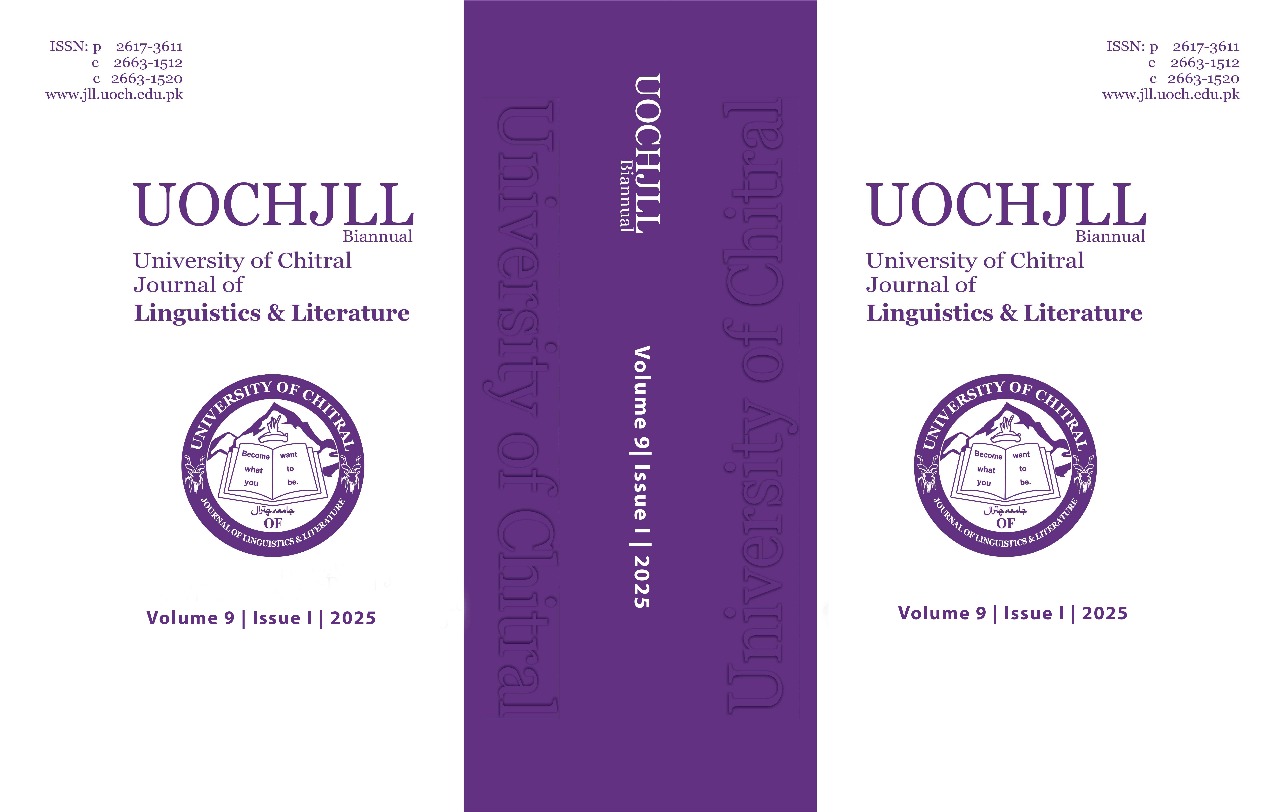Sexual imagery and male-ego in Lawrence's “Tortoise Shout” and Ted Hughes' “Thought Fox”
Keywords:
Sexual imagery, Phallic symbols, D.H. Lawrence, Ted HughesAbstract
sexual imagery has been a significant phenomenon in modern literature as writers tend to enrich their writings with social taboos and erotic contents. This paper presents the poetry of D. H. Lawrence and Ted Hughes to show how those writers used sexual images to depict their male-ego, and their manhood. Concentrating on Freud`s psychosexual development, and the use of phallic symbols. Through examining Tortoise Shout by Lawrence, and Thought Fox by Hughes, the reader can notice the sexual images that resides behind their stanzas. Accordingly, this paper tries to discover the way both writers present those images.
References
Ahmad, J., Ullah, K., & Nawab, H. U. (2024). Unveiling femininity: Exploring women’s representation in selected Khowar language proverbs from District Chitral, Khyber Pakhtunkhwa, Pakistan. Jahan-e-Tahqeeq, 7(2), 401-416.
Bandyopadhyay, N. 2013. 'Ted Hughes and his Animal World: Analysis of the Poems of Ted Hughes by the Yardstick of Eco-Criticism', Galaxy: International Multidisciplinary Research Journal IS, 2(4), pp.1-6.
Butler, J. (1999). Gender Trouble: Tenth Anniversary Edition (2nd ed.). Routledge. https://doi.org/10.4324/9780203902752.
Chad, Fox. (2021). All things Foxes. Retrieved in (December 12, 2021) from https://allthingsfoxes.com/are-foxes-friendly/
Filippis, S. D. (2012). Erotic Images and Structures of Feeling. The challenge of DH Lawrence. Études Lawrenciennes, (43), 11-30.
Galeotti, P., Sacchi, R., Rosa, D. P., & Fasola, M. (2004). Female preference for fast-rate, high-pitched calls in Hermann’s tortoises Testudo hermanni. Behavioral Ecology, 16(1), 301–308. https://doi.org/10.1093/beheco/arh165
Hawthrone, Derek. (2013). D. H. Lawrence on the meaning of sex. Counter-Currents. Retrieved (June 4, 2025), from https://counter-currents.com/2013/08/d-h-lawrence-on-the-meaning-of-sex/
Hughes, T. (1957). The Hawk in The Rain. London: Faber and Faber limited.
Kelsey, N., & Cooper, H. (1991). DH Lawrence: sexual crisis. Springer.
King, P. R. (1979). Nine Contemporary Poets: A Critical Introduction. Routledge.
Lacan, J., & Sheridan, A. (1977). Écrits: A selection. Trans. Alan Saheridan. London: Tavistock Publications.
Lawrence, D. H. (1994). The complete poems of DH Lawrence. Wordsworth Editions.
Maity, N. (2013). Ted Hughes and the Unconscious: Visualizing Ted Hughes’s Poems through the Looking Glass of Sigmund Freud. IOSR Journal of Humanities and Social Science, 12(2), 29–32. https://doi.org/10.9790/0837-1222932.
McLeod, S. (2019). Psychosexual stages. Simply Psychology. Retrieved from www.simplypsychology.org/psychosexual.html
Nazareth, P. (1963). D. H. Lawrence and Sex. Transition, 8, 38–43. https://doi.org/10.2307/2934739
Ullah, K. (2020). Lack of Tenderness: The Main Culprit for the Relationship between Husband and Wife in Lady Chatterley’s Lover. University of Chitral Journal of Linguistics and Literature, 4(II), 179-186.
Downloads
Published
Issue
Section
License
Copyright (c) 2025 Shaymaa Alsalihi, Tavgah Ghulam Saeed (Author)

This work is licensed under a Creative Commons Attribution 4.0 International License.
You are free to:
- Share — copy and redistribute the material in any medium or format for any purpose, even commercially.
- Adapt — remix, transform, and build upon the material for any purpose, even commercially.
- The licensor cannot revoke these freedoms as long as you follow the license terms.





